Velutina prolongata Carpenter, 1864Common name(s): Smooth velvet snail, baby's ear, elongate lamellaria |
|
| Synonyms: | 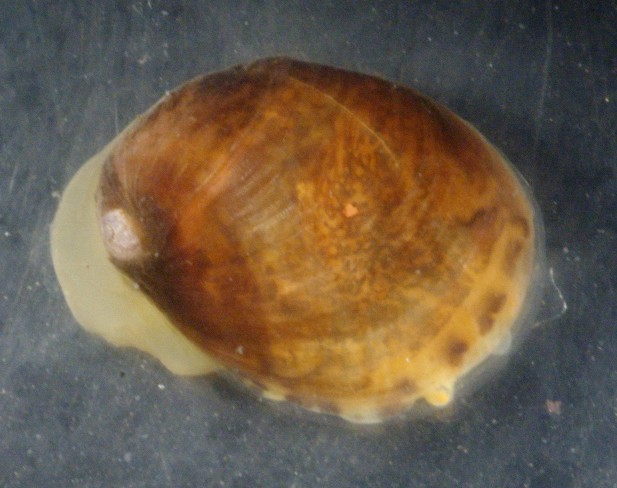 |
|
Class Gastropoda
Order Mesogastropoda
Suborder Taenioglossa
|
|
| Velutina prolongata found near Cape Flattery, WA. Shell length 1.4 cm. | |
| (Photo by: Dave Cowles) | |
How to Distinguish from Similar Species: Velutina velutina has an aperture longer than wide and has periostracal ridges which diverge as they approach the aperture. Its spire is depressed.
Geographical Range: Northern Alaska to central California
Depth Range: Usually sublittoral to 100 m, rarely intertidal
Habitat: Rocky areas; Most Velutina feed on and associate with tunicates.
Biology/Natural History:
Members of this family feed on and associate with tunicates and lay
their
eggs on the tunicates as well.
| Return to: | |||
| Main Page | Alphabetic Index | Systematic Index | Glossary |
References:
Dichotomous Keys:Carlton, 2007
Kozloff, 1987, 1996
General References:
Harbo,
1997
Lamb and Hanby, 2005
Rice, 1971
Scientific Articles:
Web sites:
General Notes and
Observations: Locations,
abundances, unusual behaviors:
I have rarely found this shell, but it can be found both on
the open
coast and in Deception Pass.
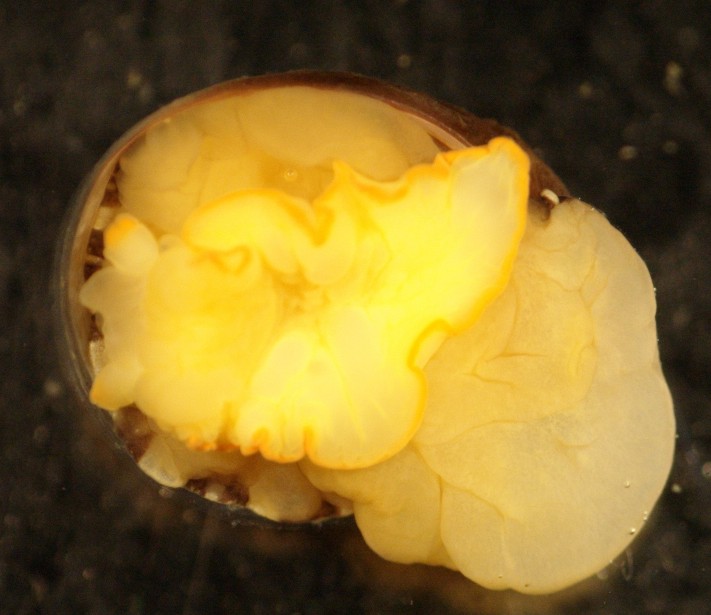
This view of the underside shows the brilliant yellow or orange rim
around the foot.
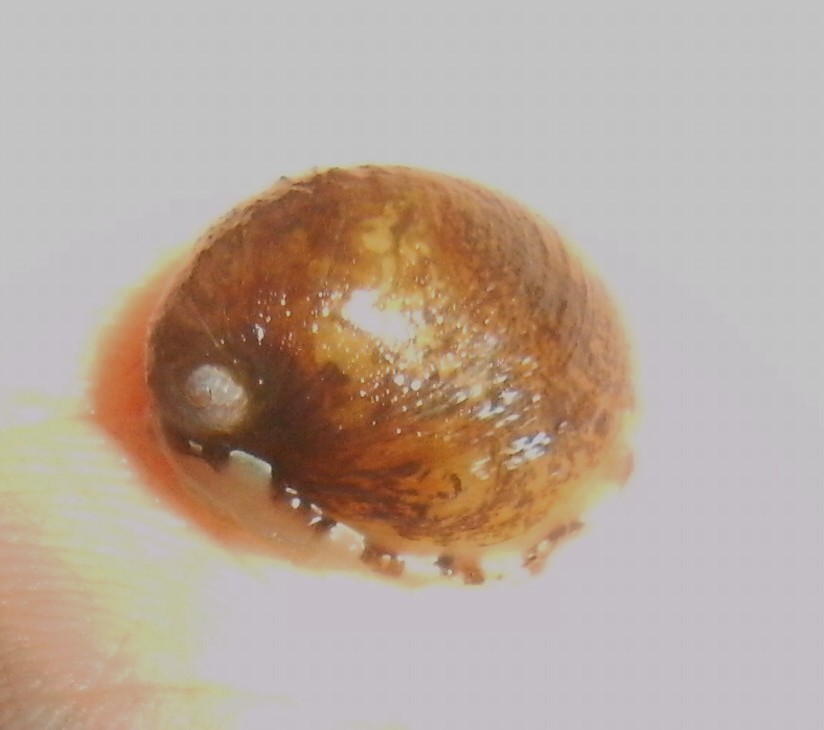
The groups of dark bands at the edges of the mantle can be seen in this live individual sitting on my hand. Photo by Dave Cowles, July 2010
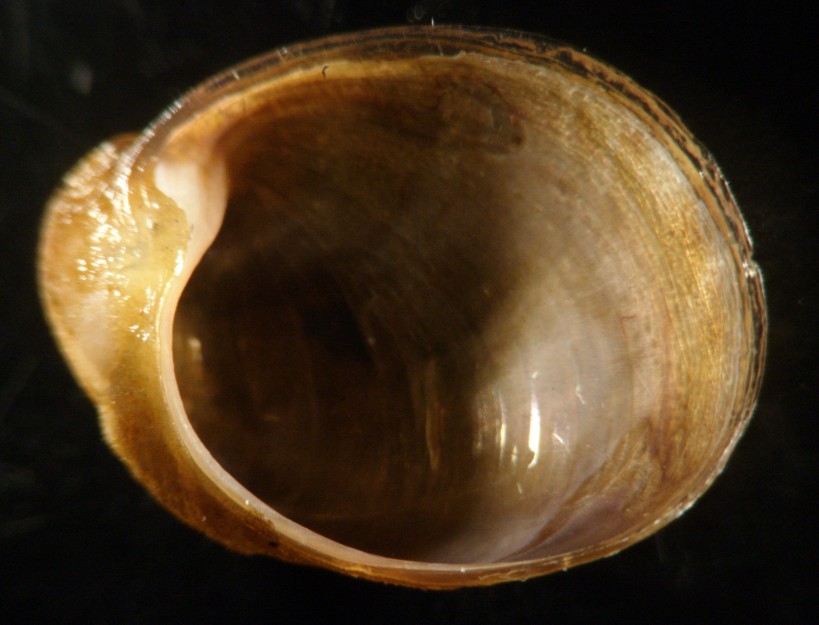
The aperture is approximately as wide as it is long. Notice also the mantle scars inside the aperture to the right. (the head was to the right)
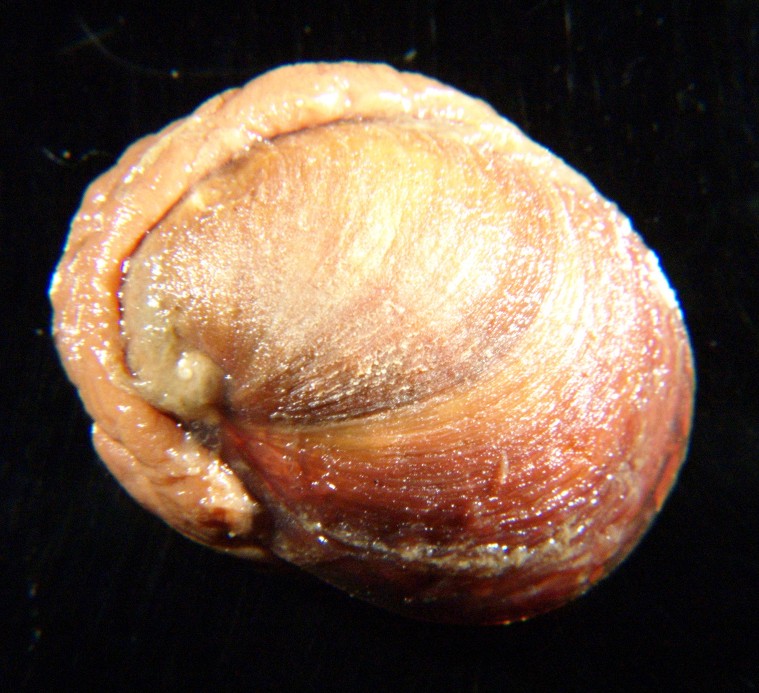
This preserved specimen from the Rosario museum was found in
Deception
Pass by D. Graham in 1987 and identified by Dave Cowles in
2010.
Shell length 2 cm.
Authors and Editors of Page:
Dave Cowles (2010): Created original page
CSS coding for page developed by Jonathan Cowles (2007)
Rosario Invertebrates web site provided courtesy of Walla Walla University